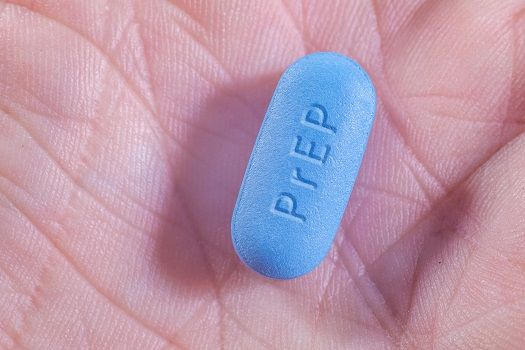Researchers Challenge CDC's HIV Prevention Guidelines
The CDC’s PrEP guidelines might not be specific enough.

Pre-exposure prophylaxis (PrEP) has proven to be around 92% effective in preventing human immunodeficiency virus (HIV) infection. Studies have backed the use PrEP, consisting of tenofovir disoproxil-emtricitabine (Truvada/Gilead Sciences), time and time again. However, it could be the guidelines that are missing high-risk groups.
The Centers for Disease Control and Prevention (CDC) advises that HIV-negative men who have sex with men (MSM) and those who are in a relationship with an HIV-positive partner should take the medication. In addition, men who have had anal sex without a condom or who were diagnosed with a sexually transmitted disease within the past six months should also take PrEP. But these guidelines that were put into place in 2012 could be omitting people who could really benefit from the drug.
Researchers from the University of California, Los Angeles (UCLA) say that the guidelines don’t touch upon specific characteristics for these gay, bisexual, and MSM. To improve this, they developed a PrEP Calculator to assess behavioral risks.
Using 9,481 HIV-negative MSM from the Los Angeles LGBT Center, the team gathered coefficients to measure an HIV risk score for each person. This model was compared with CDC guidelines using the Akaike Information Criterion and Bayesian Information Criterion.

“To the best of our knowledge, this PrEP Calculator is the first of its kind to be based on real-world data,” co-author, Robert Weiss, PhD, (pictured to the left) professor of biostatistics at the Fielding School of Public Health at UCLA. “We hope that our PrEP calculator will allow more MSM to make a more-informed decision before deciding whether or not PrEP is right for them.”
The calculator asks questions to identify other known risk factors for HIV—including substance use, number of sex partners, age, race/ethnicity, and additional sexual partner factors. The CDC guidelines don’t directly calculate these components, so the team believes that this is a better way to pinpoint high-risk people. Lead author, Matthew Beymer, PhD, a post-doctoral scholar at the David Geffen School of Medicine at UCLA, said that 20% of people who visited the Los Angeles LGBT Center weren’t sure if PrEP was right for them.
The researchers identified a risk score of five or greater as the point that would qualify someone for PrEP. After the participants used the PrEP Calculator Based on the data collected from the cohort from January 2009 to June 2014, around 51% of MSM were at that score point or greater.
“The findings from this study will allow MSM to determine their overall risk for HIV based on their own data and previous data collected at the Los Angeles LGBT Center,” Beymer said. “Ultimately, this HIV risk score can be used by the client to determine if PrEP is right for them.”
Due to the tested population thus far, it’s unclear how the PrEP Calculator would work for people who are straight, transgender, inject drugs, or live outside Los Angeles.
The study, “Are Centers for Disease Control and Prevention Guidelines for Preexposure Prophylaxis Specific Enough? Formulation of a Personalized HIV Risk Score for Pre-Exposure Prophylaxis Initiation,” was published in the journal Sexually Transmitted Diseases. The news release was provided by UCLA.
Related Coverage:
The People Most at Risk for HIV Don’t Know About PrEP
First Large Trial for Long-Lasting Injectable PrEP Gets Underway
PrEP Stigma and Uncertainty May Be Hindering Use of the HIV Preventive